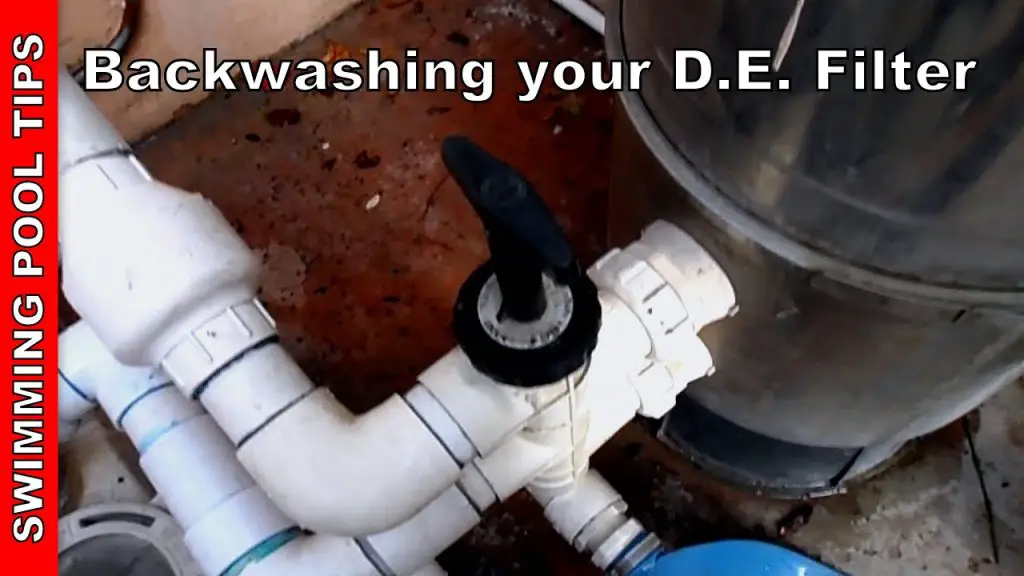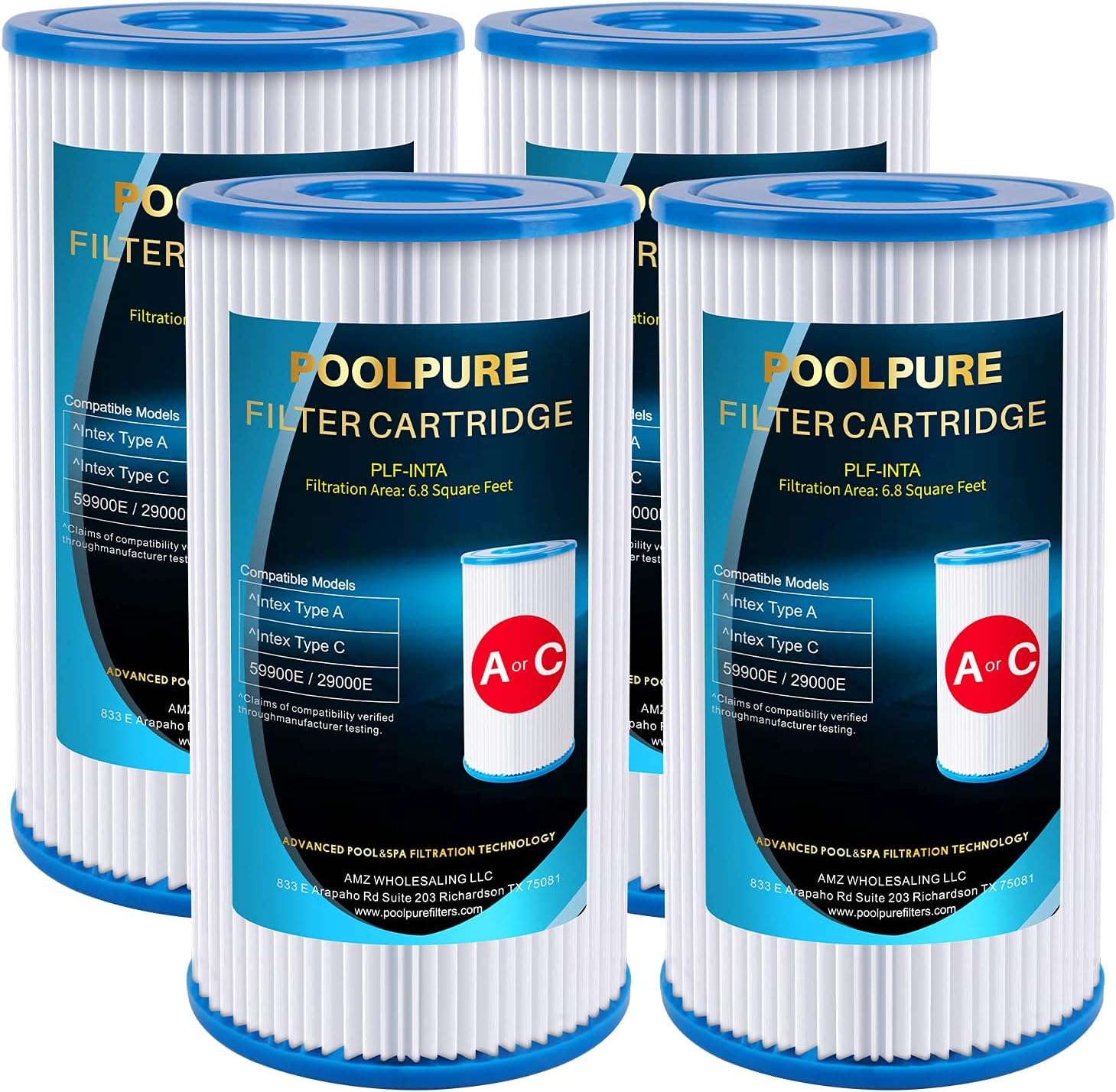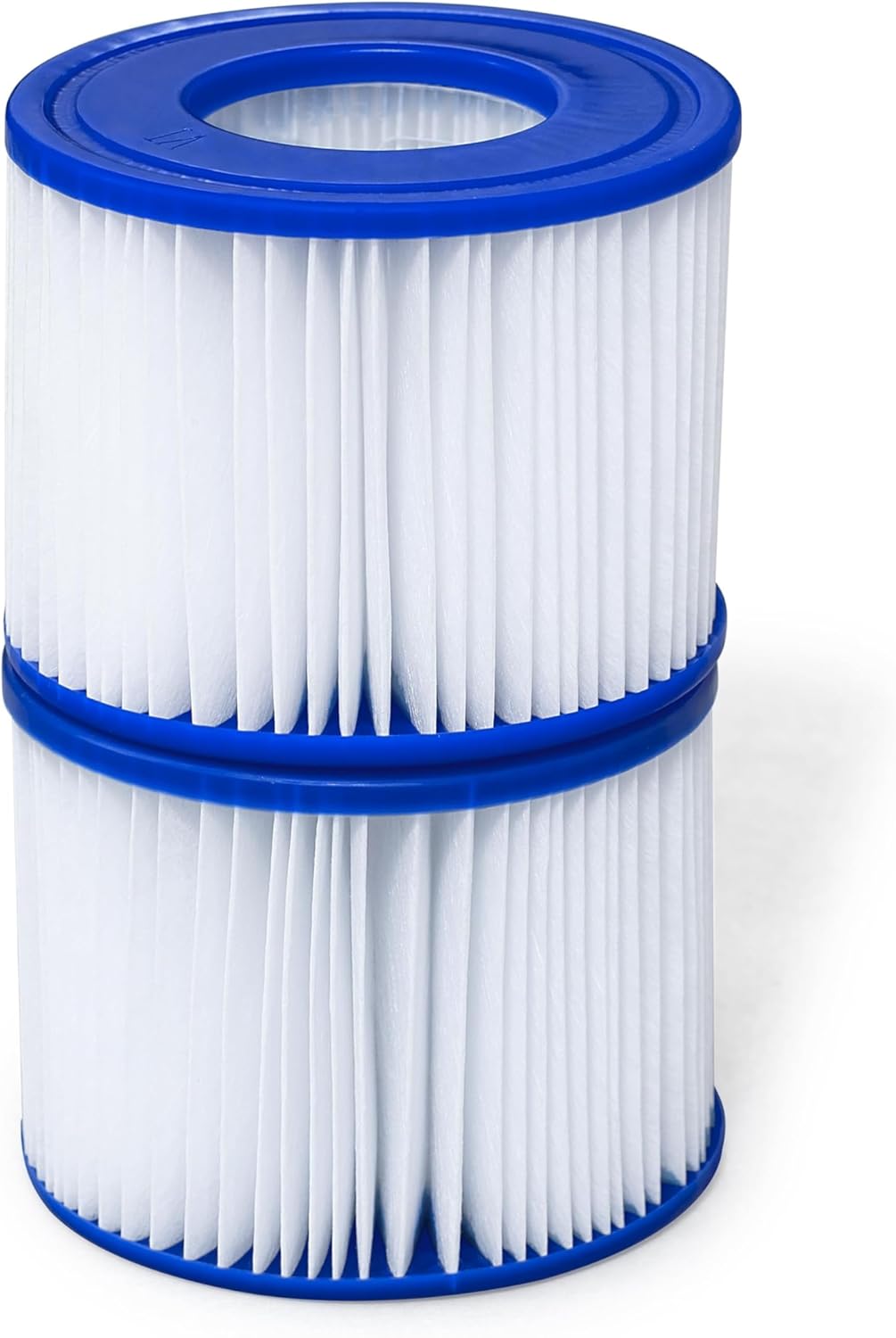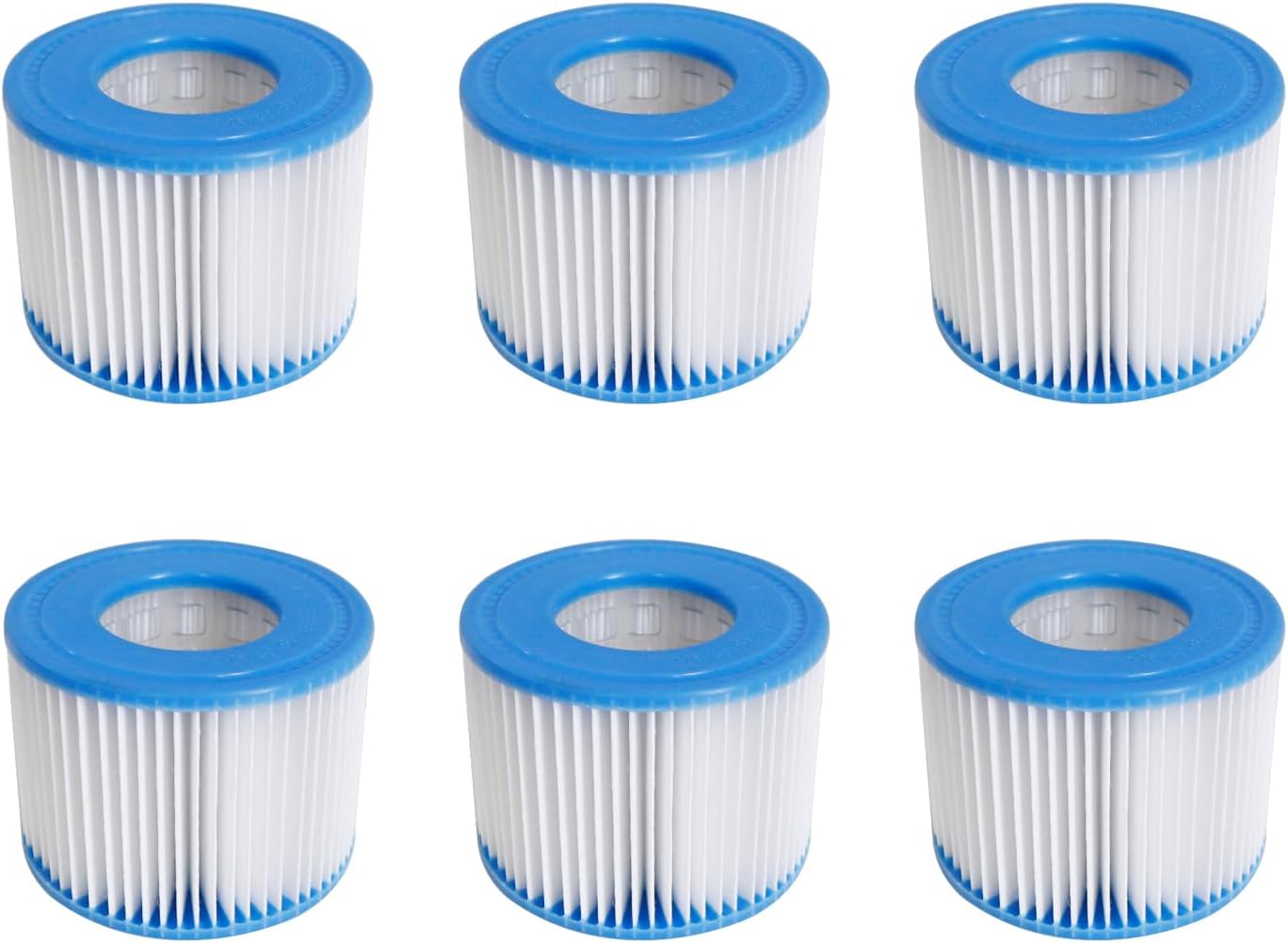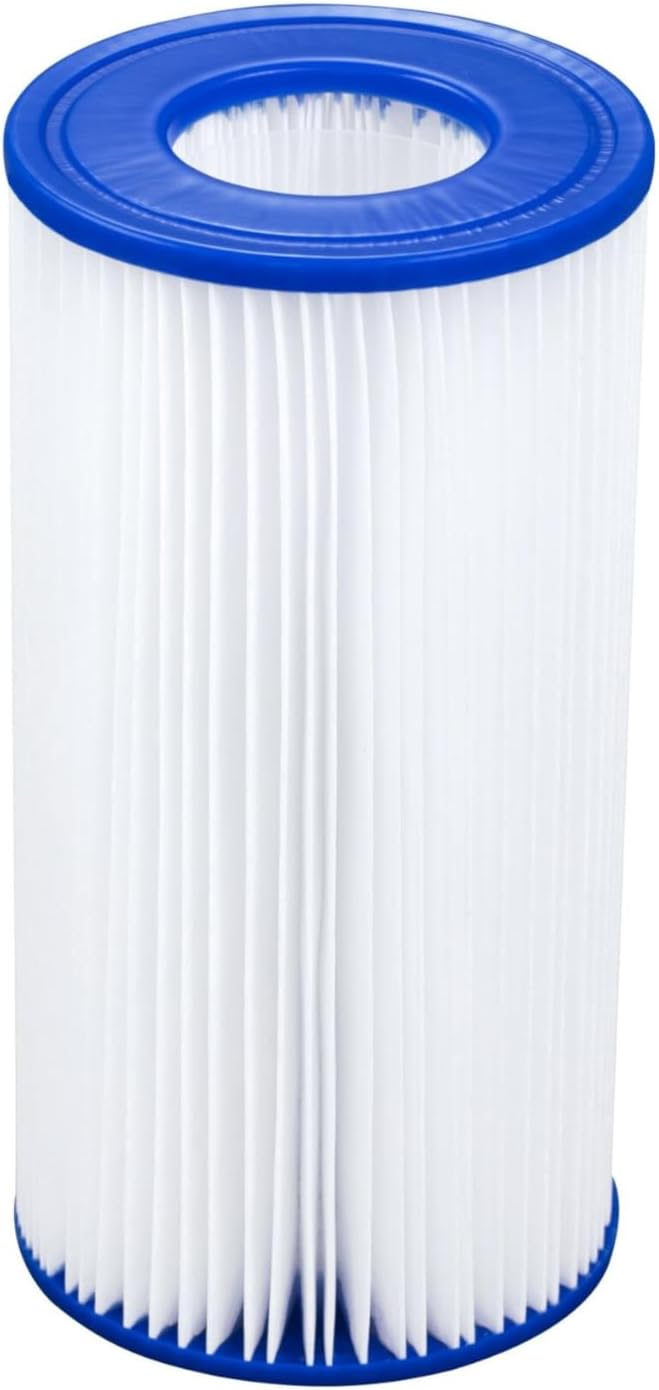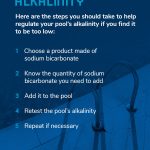To backwash a pool filter, turn off the pool pump, attach a backwash hose to the filter’s waste outlet, and set the valve handle to the backwash position. Backwash the filter for several minutes until the water runs clear, then turn off the pump and set the valve to the rinse position, running the pump for a minute to clear out any leftover debris.
Having a clean and well-maintained swimming pool is crucial for enjoying crystal-clear water and a healthy swimming environment. One essential aspect of pool maintenance is the regular backwashing of the pool filter. Backwashing helps remove built-up debris, dirt, and contaminants, ensuring that the filter operates efficiently.
We will provide you with a step-by-step guide on how to backwash a pool filter properly. By following these simple instructions, you can ensure clean and refreshing pool water all summer long.
5 Best Pool Filters For All Types Of Pools
Importance Of Backwashing
Why Backwashing Is Necessary
Backwashing is a crucial maintenance task for every pool owner. It is necessary to remove trapped debris and contaminants from the filter system, preventing them from circulating back into the pool. Without regular backwashing, the filter efficiency decreases, leading to cloudy water and potential health hazards for swimmers. Failure to backwash can also put extra strain on the pump, shortening its lifespan and incurring expensive repairs.
Benefits Of Regular Backwashing
Regular backwashing offers numerous benefits for pool maintenance. Firstly, it ensures the filter operates at peak efficiency, leading to clearer and cleaner water for a more enjoyable swimming experience. Secondly, it extends the lifespan of the filter system by preventing clogs and build-up. Additionally, consistent backwashing helps to maintain proper water circulation, reducing the need for excessive chemical treatments. Lastly, regular backwashing contributes to energy efficiency, as a clean filter requires less power to operate than a clogged one.
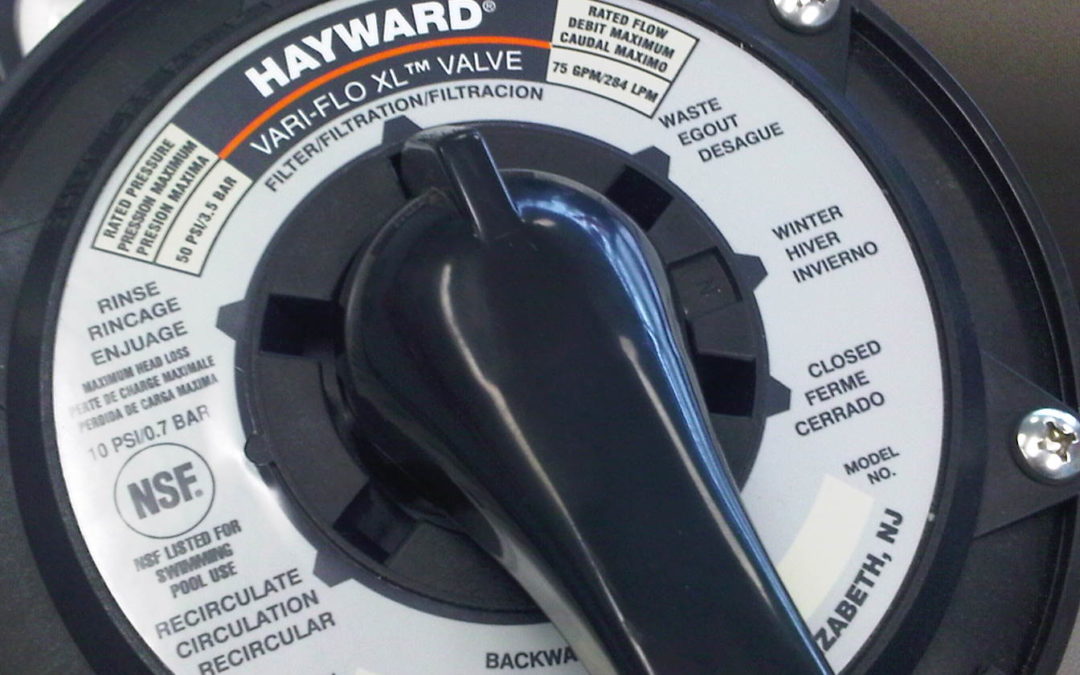
Credit: poolsidenorthshore.co.nz
Tools And Equipment
When it comes to backwashing a pool filter, having the right tools and equipment is essential for the process to be effective. By using the appropriate items, you can ensure that your pool filter functions optimally, maintaining clean and clear water. Here’s a breakdown of the tools and equipment needed for backwashing a pool filter.
Backwash Hose
A backwash hose is a crucial tool for backwashing your pool filter. This flexible and durable hose is designed to withstand the pressure generated during the backwashing process. It connects to the waste port on your filter and allows the wastewater to be directed away from the pool area. Be sure to select a hose that is long enough to reach a suitable drainage area, such as a sewer clean-out or storm drain.
Multiport Valve
The multiport valve, also known as a multiport selector or diverter valve, is a key component of the pool’s filtration system. This valve has several settings, including backwash, rinse, filter, waste, and closed. When set to the backwash position, it redirects the flow of water for the cleaning process. It’s important to ensure that the multiport valve is functioning correctly, as any malfunctions can disrupt the backwashing process and compromise the effectiveness of the filtration system.
Preparation Steps
Before starting the backwashing process, it is important to ensure that you are well-prepared to maintain the efficiency and longevity of your pool filter.
Turn Off The Pump
Always start by turning off the pump that circulates water through the filter to prevent any mishaps during the backwashing process.
Check Pressure Gauge
Regularly monitor the pressure gauge on your filter to determine when it is time to backwash, ensuring optimal performance.
Backwashing Process
A vital part of pool maintenance is the backwashing process, which helps to clean and refresh the pool filter. By following a few simple steps, you can effectively backwash your pool filter, ensuring optimal performance and water quality.
Regular maintenance of your pool filter is crucial to ensure clean and healthy water for swimming. One essential step in this process is backwashing the pool filter. Backwashing involves reversing the flow of water through the filter to remove debris and contaminants that have accumulated over time. Let’s take a closer look at the backwashing process, including how to rinse the filter and set the valve to backwash.
Rinse The Filter
Before beginning the backwashing process, it’s important to rinse the filter to remove any loose debris. To do this:
- Turn off the pool pump.
- Locate the rinse function on your filter valve.
- Set the valve to the “Rinse” position.
- Turn on the pool pump.
- Allow the water to run for about 30 seconds to flush out any loose debris from the filter.
- Turn off the pool pump again.
By rinsing the filter first, you are ensuring that the backwashing process is more effective in removing the trapped contaminants.
Set Valve To Backwash
Once the filter has been rinsed, it’s time to set the valve to the backwash position. Follow these steps:
- Turn off the pool pump.
- Locate the backwash function on your filter valve.
- Set the valve to the “Backwash” position.
- Turn on the pool pump.
- Allow the water to run for approximately 2-3 minutes, or until the water in the sight glass or discharge hose appears clear.
- Turn off the pool pump again.
The backwash position allows water to flow backward through the filter, effectively dislodging and removing trapped debris and contaminants. The clear water in the sight glass or discharge hose indicates that the backwashing process has been successful.
Monitoring The Process
To effectively backwash a pool filter, begin by turning off the pump and setting the filter to “backwash. ” Run the pump for 2-3 minutes, then switch to “rinse” for another minute to clear out any remaining debris. Repeat this process regularly for optimal pool maintenance.
Watch The Sight Glass
The sight glass on your pool filter provides a visual indication of the water clarity during the backwashing process. It allows you to monitor the efficiency of the backwash and determine when to stop. Make sure you position yourself in a convenient spot to observe the sight glass clearly.
As you start the backwashing process, keep a close eye on the sight glass. You will notice the initially cloudy water, which indicates the accumulation of dirt and debris being flushed out of the filter. As the backwash progresses, the water should gradually clear up, indicating successful cleaning.
If you find that the water remains cloudy even after several minutes of backwashing, it could be an indication that the filter media needs replacement or there is another issue with your filter system. In such cases, you may need to stop the backwashing process and consult a professional for further inspection and maintenance.
Duration Of Backwashing
The duration of the backwashing process depends on various factors such as the size of your pool filter, the level of dirt and debris, and the water flow rate. On average, it takes around 2 to 3 minutes for the initial cloudiness to clear up during backwashing.
However, it’s important not to solely rely on the time frame. Keeping a close eye on the sight glass is crucial to determine when to stop backwashing. You should continue the backwash until the water runs clear and you no longer see any signs of dirt or debris in the sight glass.
Keep in mind that over backwashing can also be detrimental to your pool system, as it can lead to the loss of filter media and inefficient filtration. A well-maintained filter with regular backwashing and proper maintenance will provide optimum performance in keeping your pool clean and clear.
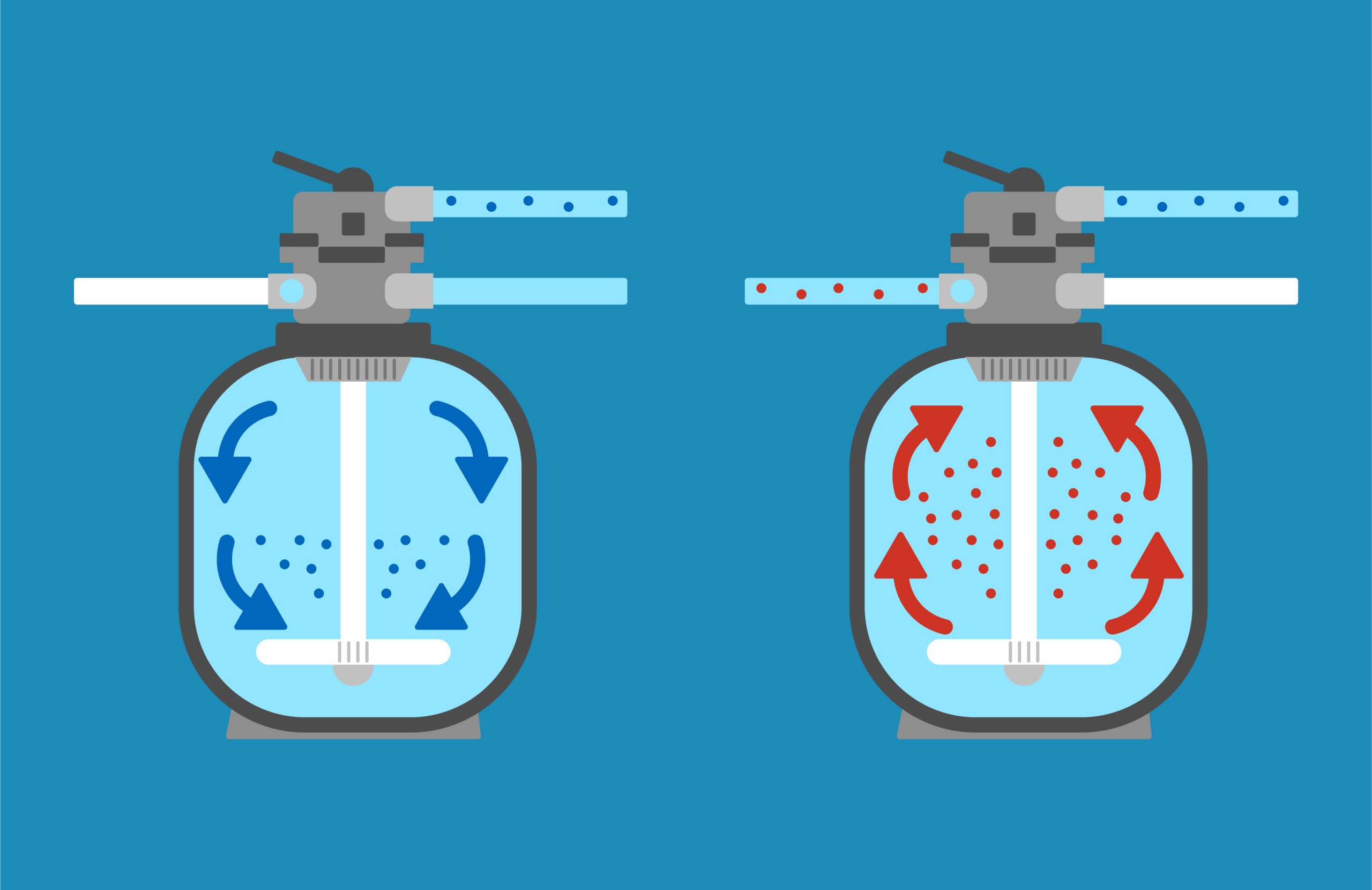
Credit: www.aquabluepools.net
Rinsing And Resetting
Rinsing and resetting your pool filter is an essential maintenance task to keep your pool clean and clear. Here’s how to ensure your filter is operating at its best with proper rinsing and resetting techniques.
Switch To Rinse Mode
1. Turn off the pool pump before making any adjustments to the filter.
2. Locate the multiport valve and switch it from the “Filter” position to the “Rinse” position.
3. Turn the pool pump back on and let it run in “Rinse” mode for about 1-2 minutes.
4. This step helps flush out any remaining debris or contaminants trapped in the filter.
Reset To Filter Mode
1. Once the rinsing process is complete, turn off the pool pump again.
2. Switch the multiport valve back to the “Filter” position.
3. Turn the pump back on to resume normal filtration.
4. Monitor the pressure gauge to ensure it returns to the normal operating range.
By following these simple steps, you can effectively rinse and reset your pool filter, ensuring optimal performance and a sparkling clean pool.
Frequency Of Backwashing
Backwashing your pool filter is a crucial maintenance task to ensure your pool water stays clean and clear. The frequency of backwashing depends on various factors such as the type of filter, the size of the pool, and the usage of the pool. Understanding the general guidelines and adjusting based on pool usage can help maintain the effectiveness of your pool filter.
General Guidelines
For most pool filters, a general guideline is to backwash the filter when the pressure gauge rises by 8-10 psi above the normal operating pressure. However, this may vary based on the filter manufacturer’s specifications, so it’s essential to refer to the owner’s manual for specific guidance. Regularly inspecting the pressure gauge and following the manufacturer’s recommendations is imperative for proper maintenance.
Adjusting Based On Pool Usage
The frequency of backwashing may need to be adjusted based on the pool usage. For example, if the pool is used more frequently or if there are adverse weather conditions like heavy rains or storms, the filter may need backwashing more often. On the other hand, if the pool is used less frequently, the backwashing frequency may be reduced. Keeping an eye on the water clarity and pressure gauge readings can help in determining when adjustments are needed.
Troubleshooting Tips
When it comes to maintaining a clean and healthy pool, backwashing the pool filter is an essential step. However, sometimes you may encounter issues that require troubleshooting to ensure the proper functioning of your pool filter system. Here are some troubleshooting tips to help you address common problems that may arise during the backwashing process.
If Pressure Doesn’t Drop
If you notice that the pressure in your pool filter system doesn’t drop after backwashing, there may be a few reasons for this issue:
- Check if the backwash valve is set to the correct position. Ensure it is fully engaged to allow water to flow out during the backwashing process.
- Inspect the pool filter for any clogs or debris that may be blocking the flow of water. Clear any obstructions to allow for proper backwashing.
- Verify the condition of the filter media. Clean or replace the filter media if it is worn out or excessively dirty, as this can affect the backwashing process.
Dealing With Cloudy Water
If your pool water remains cloudy after backwashing, consider the following troubleshooting steps:
- Test the water chemistry to ensure that the pH and chlorine levels are balanced. Adjust the chemical levels as needed to improve water clarity.
- Perform a thorough vacuuming of the pool to remove any settled debris or sediment that may be contributing to the cloudy water.
- Consider using a pool clarifier to help coagulate small particles in the water, making it easier for the filter to capture and remove them during the backwashing process.
Conclusion
Maintaining your pool’s filter system is crucial for clean water. Regularly backwashing the filter helps achieve optimal performance. Keep your pool sparkling by following these simple steps. Enjoy a refreshing and pristine swimming experience all season long with proper filter maintenance.
Happy swimming!


